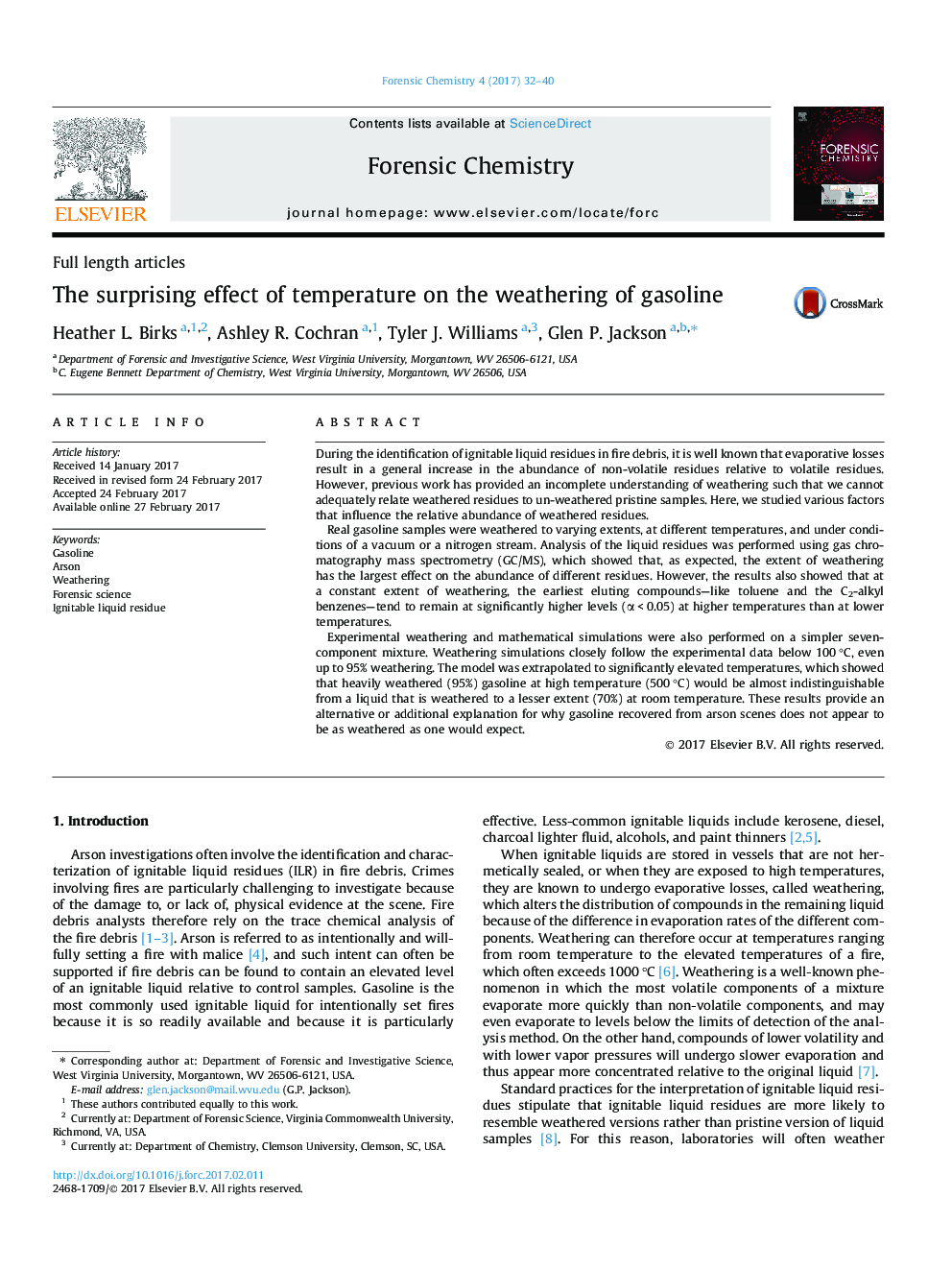| کد مقاله | کد نشریه | سال انتشار | مقاله انگلیسی | نسخه تمام متن |
|---|---|---|---|---|
| 6462021 | 1421909 | 2017 | 9 صفحه PDF | دانلود رایگان |
- A new model to simulate the evaporation of a gasoline under different conditions.
- Model includes the extent of weathering and the effect of temperature.
- The extent (percent) of weathering has the largest effect on weathering.
- When the extent of weathering is fixed, temperature has a significant impact on weathering.
- Gasoline weathered 95% at 500 °C resembles gasoline weathered 70% at 25 °C.
During the identification of ignitable liquid residues in fire debris, it is well known that evaporative losses result in a general increase in the abundance of non-volatile residues relative to volatile residues. However, previous work has provided an incomplete understanding of weathering such that we cannot adequately relate weathered residues to un-weathered pristine samples. Here, we studied various factors that influence the relative abundance of weathered residues.Real gasoline samples were weathered to varying extents, at different temperatures, and under conditions of a vacuum or a nitrogen stream. Analysis of the liquid residues was performed using gas chromatography mass spectrometry (GC/MS), which showed that, as expected, the extent of weathering has the largest effect on the abundance of different residues. However, the results also showed that at a constant extent of weathering, the earliest eluting compounds-like toluene and the C2-alkyl benzenes-tend to remain at significantly higher levels (α < 0.05) at higher temperatures than at lower temperatures.Experimental weathering and mathematical simulations were also performed on a simpler seven-component mixture. Weathering simulations closely follow the experimental data below 100 °C, even up to 95% weathering. The model was extrapolated to significantly elevated temperatures, which showed that heavily weathered (95%) gasoline at high temperature (500 °C) would be almost indistinguishable from a liquid that is weathered to a lesser extent (70%) at room temperature. These results provide an alternative or additional explanation for why gasoline recovered from arson scenes does not appear to be as weathered as one would expect.
122
Journal: Forensic Chemistry - Volume 4, June 2017, Pages 32-40
